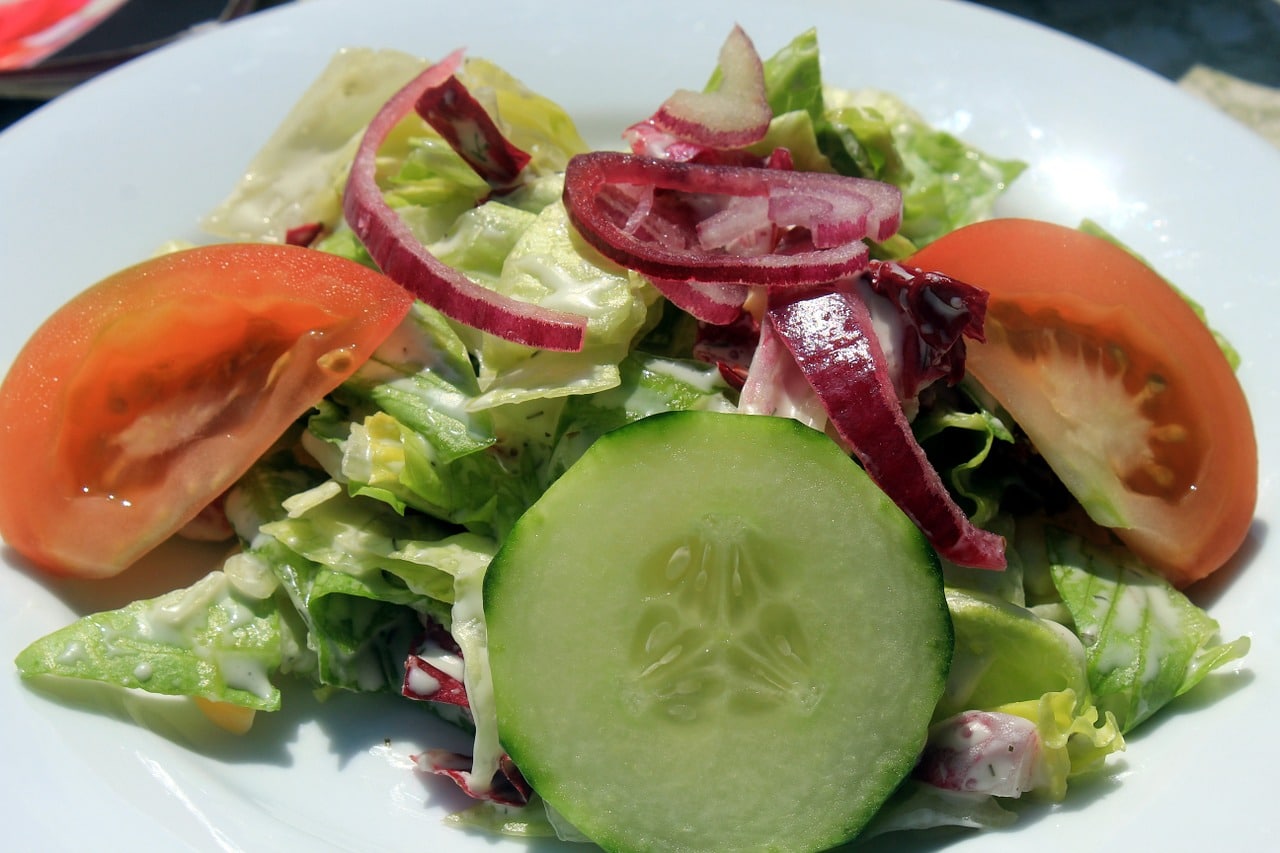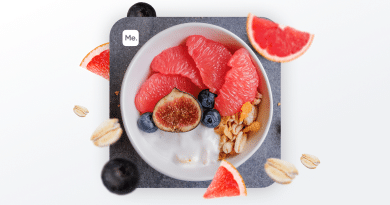The Components of the Food We Eat: Fat
TYPES OF FATS
Surprisingly, there is no precise definition of the word ‘fat’. The term is generally applied to foods that are fatty in nature, greasy in texture, and immiscible in water. Obvious examples are butter and spreads (Flora, Mono, Clover, etc.), cooking oils, the fatty parts of meat, and the skin of poultry and game. Generally, people think of fats as solid in texture and distinct from oils, which are liquid at ambient temperature. Chemically, however, there is little distinction between fat and oil, as they are both composed of similar chemical compounds.
Fats are generally solid at low temperatures and become liquids when they are heated, whilst oils are simply fats that are liquid at room temperature due to a higher content of unsaturated fatty acids. Oils can solidify on refrigeration.
Fats make an important contribution to food characteristics, giving texture and palatability. In addition, fats usually contain small quantities of other fat-soluble substances and flavor components. Animal fats may contain vitamin A, vitamin D, and varying amounts of cholesterol. On the other hand, vegetable fats may contain B-carotene (a raw form of vitamin A), and vitamin E, but no cholesterol.
In Nutrition and Dietetics, a distinction is often made between ‘visible’ and ‘invisible’ fats. Visible fats are those apparent to the consumer as fat. They include fat spreads, cooking oils, and fat around the meat and skin of the chicken. In contrast, a great deal of the fat in many foodstuffs is hidden by incorporation during preparation and cooking. Examples include cheese, cake, biscuits, cookies, potato crisps, chips and other fried foods, processed meats and sausages, and emulsions such as mayonnaise, salad creams, and dressings.
It must therefore be emphasized that cutting down on hidden sources of fat, together with some adjustments in cooking methods must be sought if a reduction in total fat intake and hence energy intake is to be achieved on a long-term basis.
In other words, successful steps towards achieving a balanced diet should take into account both methods of food preparation and an awareness of hidden sources of fat, which is the most energy-dense nutrient.
The total fat content in the diet is very difficult to measure, because different samples of the same food may vary widely in fat content as well as in the fat type, especially in the case of meat. Therefore, only approximate figures for total fat content are produced by food tables and nutritional labeling.
It must be noted that the amount of energy obtained from different fats, including oils, is about the same, despite their different functions and properties. Fat provides more than double the energy (9kcal per gram) than an equal weight of carbohydrate or protein (4 kcal per gram). This is why fat is targeted as an essential means for lowering calorie intake, rather than carbohydrates. The latter not only contains less than half of the calories yielded by fat but also is essential for the supply of immediate energy for physical activity.
Other Sources of Fat
Milk fat
Cow’s milk and dairy products currently contribute 24% of the fat in the UK diet, although this figure is slowly decreasing as the sale of lower-fat milk increases at the expense of full-fat milk. In 1983, only 3% of milk sold in the UK was of the lower-fat variety, whereas in 1991 the figure was 42%.
Cow’s milk is the only milk of quantitative importance in the UK, but in some countries, goat’s milk and sheep’s milk are of considerable importance, and there is increasing interest in these in Britain today. Milk fats contain small amounts of cholesterol and fat-soluble vitamins.
Eggs
Eggs provide a significant source of fat in many human diets. One egg on average provides 250-300mg of cholesterol. This is why the consumption of eggs is limited in cholesterol-lowering diets. However, the importance of eggs lies not only in their fat content but also in the contribution made by the egg yolk to the structure of food, particularly to the textural quality of deserts, soufflÃ�©s, etc. Eggs are also an excellent source of high biological value protein and essential vitamins (A, D, and Folic Acid), as well as minerals such as Phosphorous, Zinc, Silica, Selenium, and Iodine.
Fish Oil
Several other polyunsaturated fatty acids occur in plants and fish oils and are thought to be particularly beneficial to health. They include Gamma Linolenic Acid (GLA), Dolosahexanoic Acid (DHA) and Eicosapentaenoic Acid (EPA). These fatty acids are required in very small quantities but are necessary for the structure and function of cells and tissues. Vegetable seeds are also among the principal sources of n-6 polyunsaturated fatty acids.
Polyunsaturated fatty acids can be classified into n=3 (omega 3) or n=6 (omega 6). DHA and PEA (obtained in the diet principally from oily fish) and alpha-linolenic acids belong to the n=3 family. Linolenic acids and GLA belong to the n=6 family and are obtained in the diet mainly from vegetable seeds and polyunsaturated margarine. Commercially available supplements, such as evening primrose and starflower, supply appreciable amounts of GLA, whilst linseed oil (flaxseed oil) contains both omega 3 and omega 6 and therefore makes a good alternative supplement for those who cannot take fish oils. Both n-3 and n-6 polyunsaturated fatty acids must be present in the diet for the maintenance of good health.
Oily fish such as herring, mackerel, pilchards, salmon, sardines, tuna, and kipper store their fat in the flesh, while other types of fish store their fat in the liver. These oily fish represent the principal sources of omega-3 polyunsaturated fatty acids. White fish such as cod, haddock, and plaice contain little fat, apart from that found in the liver. This makes them an essential inclusion in any low-fat diet, particularly cholesterol-lowering diets.
The cholesterol in food has a smaller effect on blood cholesterol than saturated fatty acids, but naturally, the effect varies in different people. Omega 3 fish oils do not seem to have a major effect on blood cholesterol concentration but may help to prevent heart disease by decreasing the tendency of the blood to clot and stabilizing the cell membranes of the heart. Current government recommendations suggest that the average intake of omega 3 for the general population should be doubled to about 0.2g per day (1.5g per week). This can easily be achieved by increasing oily fish consumption to about once or twice per week. At the same time, a decrease in total fat intake, specifically saturated fatty acids, is strongly recommended. Replacing saturated fat (e.g. butter, cream, and cheese) with monounsaturated fat (e.g. olive oil, Olivio) or polyunsaturated fatty acids (corn, sunflower, Flora) in the diet can help to lower LDL cholesterol levels.
The government policy document, the Health of the Nation (1991), includes national dietary targets for reductions in the average intake of total fat to 30-35%, saturated fatty acids to 10%, polyunsaturated fatty acids to 6%, monounsaturated fatty acids to 12% and Trans fatty acids to only 2% of total food energy. These dietary recommendations were intended to achieve a radical decrease in morbidity and mortality from heart disease.
Copyright 2012: Therapia: All Rights Reserved: Therapia is a Registered Trademark



